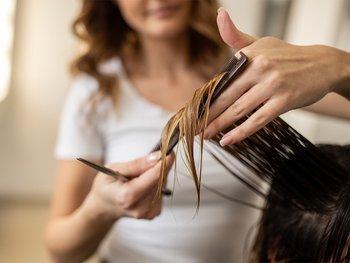Split Ends: Causes and Cures
Almost everyone experiences split ends, so you're not alone. This article will explore the causes of split ends, how to get rid of them, and, most importantly, how to prevent them. Read on for the best tips and tricks!
Almost everyone experiences split ends, so you're not alone. This article will explore the causes of split ends, how to get rid of them, and, most importantly, how to prevent them. Read on for the best tips and tricks!
If you’re wondering how to get rid of split ends, it’s time for the moment of truth: split ends can’t be repaired. Much like a glass vase, they can’t be glued back together. Your only option is to snip them off and start anew, so your first stop is at a salon to get a trim. You’ll notice a difference right away! If trimming off your split ends isn’t in the stars, there are ways to keep them under wraps.



